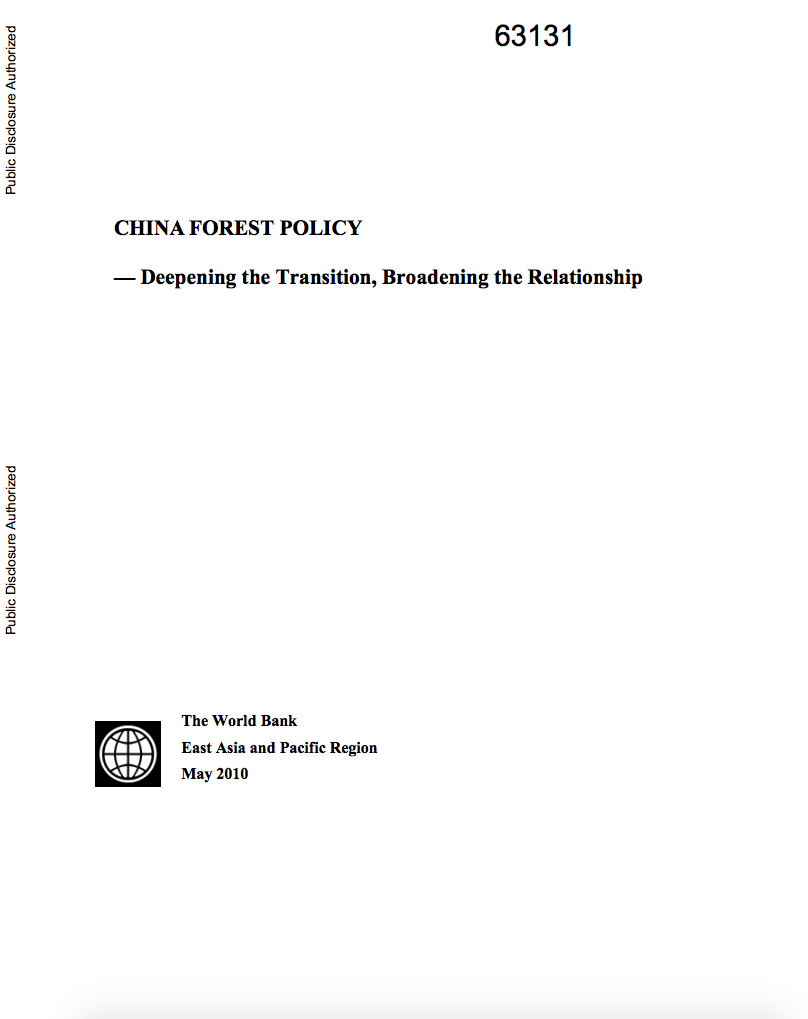The World Bank is a vital source of financial and technical assistance to developing countries around the world. We are not a bank in the ordinary sense but a unique partnership to reduce poverty and support development. The World Bank Group has two ambitious goals: End extreme poverty within a generation and boost shared prosperity.
- To end extreme poverty, the Bank's goal is to decrease the percentage of people living on less than $1.25 a day to no more than 3% by 2030.
- To promote shared prosperity, the goal is to promote income growth of the bottom 40% of the population in each country.
The World Bank Group comprises five institutions managed by their member countries.
The World Bank Group and Land: Working to protect the rights of existing land users and to help secure benefits for smallholder farmers
The World Bank (IBRD and IDA) interacts primarily with governments to increase agricultural productivity, strengthen land tenure policies and improve land governance. More than 90% of the World Bank’s agriculture portfolio focuses on the productivity and access to markets by small holder farmers. Ten percent of our projects focus on the governance of land tenure.
Similarly, investments by the International Finance Corporation (IFC), the World Bank Group’s private sector arm, including those in larger scale enterprises, overwhelmingly support smallholder farmers through improved access to finance, inputs and markets, and as direct suppliers. IFC invests in environmentally and socially sustainable private enterprises in all parts of the value chain (inputs such as irrigation and fertilizers, primary production, processing, transport and storage, traders, and risk management facilities including weather/crop insurance, warehouse financing, etc
For more information, visit the World Bank Group and land and food security (https://www.worldbank.org/en/topic/agriculture/brief/land-and-food-security1
Resources
Displaying 4291 - 4295 of 4907Yemen - Assessing the Impacts of Climate Change and Variability on the Water and Agricultural Sectors and the Policy Implications
Yemen is particularly vulnerable to
climate change and variability impacts because of its water
dependence and current high levels of water stress. This
natural resource challenge is compounded by demographic
pressure, weak governance and institutions, and by a
deteriorating economic situation. The economic and social
outlook is not bright, and planning and international
support will certainly be needed to help Yemen to adapt to
Managing Urban Expansion in Mongolia
: Best Practices in Scenario-based Urban Planning
The sustainable development of ger areas
in Ulaanbaatar (UB), the capital city of Mongolia, is one of
the critical development issues facing the country. The
transitions to a market economy and a series of severe
winters (called zud) have resulted in the large-scale
migration of low-income families into the ger areas of UB.
The city represents 40 percent of the nation's
population and generates more than 60 percent of
China Forest Policy : Deepening the Transition, Broadening the Relationship
A pattern of forest area loss followed
by a period of reforestation is representative of the forest
transition process. Forest transition has been observed in
many countries and is a feature of the development process.
China reached its inflection point earlier and faster than
most other countries that have gone through the transition.
The report describes the success of reforms to forest
resource tenure in collective forest areas. These reforms,
Republic of Tajikistan - Country Economic Memorandum :
Tajikistan’s Quest for Growth: Stimulating Private Investment
The Tajik government in its Poverty
Reduction Strategy Paper for 2010-12 set an ambitious target
of doubling Gross Domestic Product (GDP) in a decade.
Tajikistan clearly has the potential to grow at more than
seven percent a year as it has done in the recent past, but
it is not going to be easy. The potential for
'catch-up' growth from the depths of the recession
of the 1990s is largely exhausted, the external environment
Managing Water for Sustainable Growth and Poverty Reduction : A Country Water Resources Assistance Strategy for Zambia
The country water resources assistance
strategy for Zambia provides an analysis of the role of
water in the economy and identifies the specific challenges,
development opportunities and policies which inform an
agreed framework for priority areas of assistance. Zambia
lies entirely within the catchments of the Zambezi and Congo
rivers and all internal runoff is shared by downstream and
parallel riparian countries. This strategic geographic







